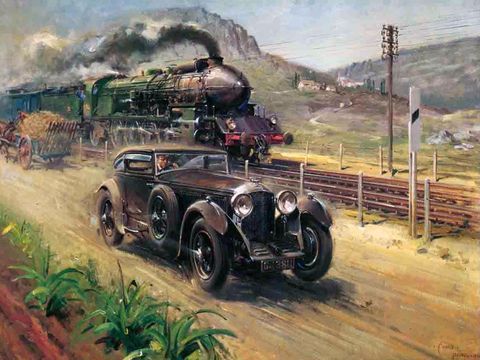05 August 2022
The Blue Train was an overnight express train that ran from Calais in the north of France to the resort towns along the Cote d’Azur. Its passengers were vacationers, typically wealthy and often British by the late 1920s. And for a short time, racing the train and winning became a marketing tool used by British automakers.
I have always associated Bentley with the Blue Train race; however, in 1930, two other companies, Rover and then Alvis, beat the Blue Train from the Mediterranean coast to Calais and then went on to advertise their cars on the strength of this feat.
The story is that Woolf Barnato drove his Gurney Nutting coupé, immortalised by Terence Cuneo, the famous motoring artist.
However, he could not have driven the car in March 1930 since it hadn’t been built at that point.
The mystique of the Gurney Nutting coupé is so strong, and the attribution to it of the Blue Train run so ingrained that it is hard to forget that it isn’t the car that Barnato drove. All the evidence points to Barnato carrying out the Blue Train run in a somewhat more down-to-earth four-door Weymann fabric saloon by H J Mulliner.
The notion alone was so glamorous and gripping that the public’s imagination happily filled in the blanks and built it into a larger-than-life epic. If Barnato was aware of the misinformation that had sprung up around the story, he never seemed to protest it too strenuously.
We all buy into the glamour that a dashing playboy could drop everything and rise to the challenge which resulted from a wager in a posh bar the night before.
Incidentally, the French didn’t see it that way, fining him for racing on public roads and banning Bentley from the 1930 Paris motor show.
![]()

